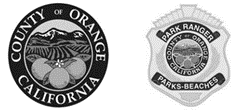The US Court of Appeals for the Federal Circuit affirmed a district court’s finding of noninfringement in a Hatch-Waxman case under 35 U.S.C. § 271(e)(2) and § 271(a)-(b). The Court found that the alleged infringer’s abbreviated new drug application (ANDA) specification controlled the § 271(e)(2) infringement inquiry, and that there were no clear errors by the district court that would warrant reconsideration of the § 271(a)-(b) ruling. Par Pharmaceutical, Inc. et al. v. Eagle Pharmaceuticals, Inc., Case No. 21-2342 (Fed. Cir. Aug. 18, 2022) (Moore, Prost, Hughes, JJ.)
Par is the maker of Vasostrict®, a vasopressin injection product used to treat patients with critically low blood pressure. Par sued Eagle, an ANDA filer seeking to market a generic version of Vasostrict®, asserting infringement of two Orange Book-listed patents. The claims of both asserted patents required a vasopressin composition with a rounded pH between 3.7 and 3.9 (i.e., a pH between 3.65 and 3.94 before rounding). Par argued that Eagle infringed because Eagle’s ANDA sought approval for a product with a pH of 3.64, just 0.01 beneath the claimed range, and because “real-world” evidence purportedly showed that the pH of Eagle’s product drifts up over time. Accordingly, Par asserted infringement under § 271(e)(2), based on the filing of Eagle’s ANDA, and also sought a declaratory judgment that Eagle’s planned generic product would infringe under § 271(a)-(b). The district court disagreed. Par appealed.
Turning first to the issue of infringement under § 271(e)(2), the Federal Circuit explained that because drug manufacturers are bound by strict statutory provisions to sell only those products that comport with their ANDAs, if an ANDA defines a proposed generic drug in a manner that directly addresses the issue of infringement, the ANDA controls the infringement inquiry. The Court stated, however, that if an ANDA specification does not speak clearly and directly to the question of infringement, courts may look to other relevant evidence, such as data or samples the ANDA filer has submitted to the US Food & Drug Administration (FDA), to assess whether a proposed product will infringe.
The Federal Circuit found that in Eagle’s case, “the inquiry begins and ends with Eagle’s ANDA specification.” Eagle’s ANDA contained both a release specification, requiring the generic product to have a pH range of 3.4–3.6 (i.e., up to 3.64 before rounding) at the time of distribution, and a stability specification, requiring that same pH range throughout the entirety of the product’s shelf life. Par argued that the stability specification was irrelevant to the infringement inquiry because the FDA cannot ensure that every product Eagle sells complies with the stability specification. The Court disagreed, finding that the district court did not clearly err in ruling that Eagle’s ANDA defined a product outside the scope of Par’s claims.
As to Par’s declaratory judgment claim under § 271(a)-(b), the Federal Circuit found that the district court did not commit clear error in its consideration of Par’s infringement arguments. The district court considered but did not find compelling Par’s evidence of an upward pH drift in Eagle’s post-release pH data [...]
Continue Reading
read more

 Subscribe
Subscribe




